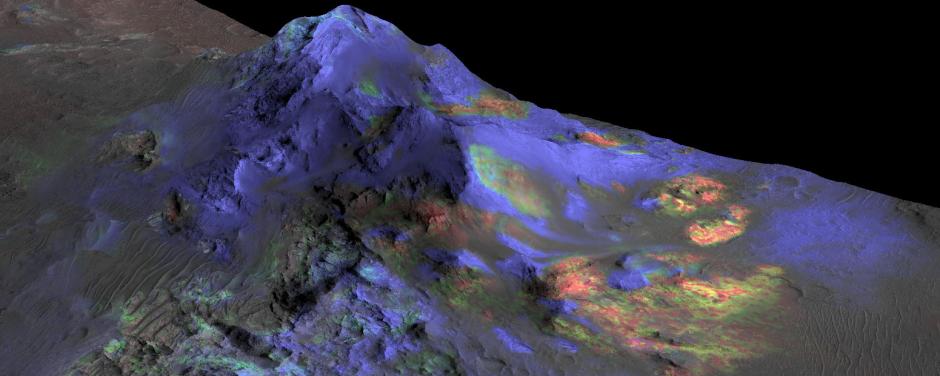Over the last few years, several research groups have shown that, here on Earth, ancient biosignatures can be preserved in impact glass. One of those studies, led by Brown geologist Peter Schultz and published last year, found organic molecules and even plant matter entombed in glass formed by an impact that occurred millions of years ago in Argentina. Schultz suggested that similar processes might preserve signs of life on Mars, if indeed they were present at the time of an impact.
“The work done by Pete and others showed us that glasses are potentially important for preserving biosignatures. Knowing that, we wanted to go look for them on Mars and that’s what we did here,” said Kevin Cannon, a Ph.D. student at Brown and the lead author of the new research. “Before this paper no one had been able to definitively detect them on the surface.”
Cannon and co-author Jack Mustard, professor of Earth, environmental and planetary sciences at Brown, showed that large glass deposits are present in several ancient yet well-preserved craters scattered across the Martian surface. The study suggests that glass deposits are relatively common impact features on Mars and could be targets for future exploration.

Spectral signals: Researchers have found deposits of impact glass preserved in Martian craters like Alga (above) using data from NASA's Compact Reconnaissance Imaging Spectrometer for Mars (CRISM). Green indicates the presence of glass. (Blues are pyroxene; reds are olivine.) Such deposits could be a good place to look for signs of past life. Image: NASA/JPL-Caltech/JHUAPL/University of Arizona
Picking out the glassy deposits was no easy task. To identify minerals and rock types remotely, scientists measure the spectra of light reflected off the planet’s surface. But impact glass doesn’t have a particularly strong spectral signal.
“Glasses tend to be spectrally bland or weakly expressive, so signatures from the glass tend to be overwhelmed by the chunks of rock mixed in with it,” Mustard said. “But Kevin found a way to tease that signal out.”
In the lab, Cannon mixed together powders with a similar composition of Martian rocks and fired them in an oven to form glass. He then measured the spectral signal from that glass. Once he had the signal from the lab glass, he used an algorithm designed to pick out similar signals in data from the Compact Reconnaissance Imaging Spectrometer for Mars (CRISM), which flies aboard NASA’s Mars Reconnaissance Orbiter. Mustard is the deputy principal investigator for the instrument.
The technique was able to pinpoint deposits around several crater central peaks, the craggy mounds that often form in the center of a crater during a large impact. The fact that the deposits were found on central peaks is a good indicator that they have an impact origin.
Knowing that impact glass can preserve ancient signs of life — and now knowing that such deposits exist on the Martian surface today — opens a potential new strategy in the search for ancient Martian life, the researchers say.






Comments